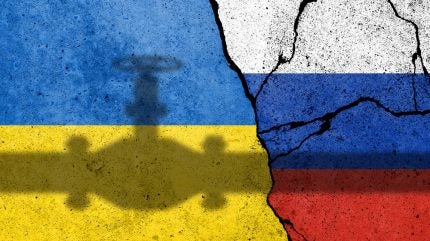
The advent of 2025 brought with it the end of a years-long gas transit arrangement between Ukraine and Russia, leaving much of eastern Europe in the cold – and desperately looking for a new source of reliable power.
For Ukraine, the end of the agreement will result in the loss of up to $1bn (Hrv42.27bn) in annual transit fees and additional industry costs of Hrv1.6bn per year due to increased transmission tariffs.
In turn, Russia’s state-owned gas supplier Gazprom is set to lose approximately $5bn (Rbs510.51bn) in gas sales.
On social media, Ukrainian President Volodymyr Zelenskiy declared the end of transit as “one of Moscow’s biggest defeats” while Ukraine’s Energy Minister, German Galushchenko, called the move “historic”.
“The more there is on the market from Europe’s real partners, the faster we will overcome the last negative consequences of European energy dependence on Russia,” said Zelenskiy.
The European Commission was quick to release a statement on 2 January emphasising its lack of concern for gas supply security, asserting “European gas infrastructure is flexible to accommodate gas of non-Russian origin”.
Speaking to Offshore Technology, industry association Gas Infrastructure Europe (GIE) appeared equally confident.
“Gas infrastructure managed to cope with the halt of major Russian gas supplies in 2022 via reverse flows from West to East, high storage fillings, new capacities for LNG [liquefied natural gas] imports and demand decrease (mainly due to high gas prices),” it said. “Since then, Europe has significantly diversified its natural gas import routes.”
However, Ukraine’s decision has serious consequences for other European countries that relied heavily on the transit route.
Which countries have been hit hardest?
The halt in transit has prompted the last EU buyers of Russian gas, including Slovakia and Austria, to secure alternative supplies. However, GlobalData oil analyst Raj Shekhar points out that “these arrangements are either more expensive or carry higher supply risks”.
Hungary and Serbia will continue to receive Russian gas through the TurkStream pipeline, which has a capacity of 31.5 billion cubic metres (bcm).
On 3 January, Slovakia’s Government announced it is considering potential retaliatory actions against Ukraine, including reducing electricity exports, decreasing aid to Ukrainian refugees and insisting on the resumption of gas transits or financial compensation. The country is now the main entry point for gas into the EU.
The stoppage has created an energy emergency in Transnistria, a pro-Russian region in Moldova, leaving 450,000 people without heat and hot water in the depths of winter.
Moldova is a prime example of the complex web that forms European gas supply chains. The country stopped importing gas from Gazprom in late 2023, but its infrastructure still remains under Russian control. Exacerbating matters is Moldova’s alleged unpaid debts to Russia over the free gas supplied to Transnistria before the new year.
As for Ukraine itself, Zelensky is looking to the US and incoming president Donald Trump, citing his “unpredictability” as a promising catalyst for the end of the conflict with Russia. Indeed, Trump has vowed to stop the war in “24 hours” once in power, but this is expected to come in the form of halted defence support for Ukraine and a lifting of sanctions, including power exports.
The shifting landscape of European gas supply
The diversification efforts of EU member states to reduce reliance on Russian gas have been ongoing since 2022 as countries recognised that Ukraine was unlikely to renew the transit contract.
According to Offshore Technology’s parent company, GlobalData, gas in Europe reached a production rate of 22.2 billion cubic feet per day in 2024 and many European countries will significantly increase their regasification capacity in 2025.
LNG from the US and Qatar has emerged as Europe’s prime alternative to Russian gas. According to the Commission’s statement, gas supply in the continent has been “reinforced with significant LNG import capacities since 2022. Storage levels at 72% are slightly higher than the average (69%) for this time of the year.”
GIE told Offshore Technology that diversification “is at the core of the EU’s strategy for the supply of gas. This is notably the case in the near future with LNG supply de-risking, as capacities can be quickly ramped up compared to land transportation.”
The Institute for Energy Economics and Financial Analysis has estimated that the annual import capacity of European LNG terminals is set to reach 406bcm by 2030 as new terminals come online, while the continent’s total gas demand is expected to fall to around 400bcm over the same period.
Replacing lost volume transits with LNG imports is not a fix-all, however, given the risks of economic loss and competitive disadvantages feared by countries with significant pipeline infrastructure, such as Slovakia.
Shekhar explained: “Land-locked countries such as Hungary, Moldova, Austria and Slovakia possess decent gas transmission networks, with some even having upcoming projects. Notably, Slovakia has plans to install new gas pipelines and expand gas storage capacity.
“However, the realisation of some of these projects may take time. Once LNG supplies materialise, there is a possibility of getting some of these re-gassed product using these networks.”
After cutting off Russia, Ukraine can double down on its extensive gas storage. State-owned Naftogaz has Europe’s largest underground facilities with a capacity of 30.9bcm, 10bcm of which is available to foreign traders.
Meanwhile, Norway’s gas fields continue to sustain Europe’s supply, with the Troll field achieving a historic production milestone of 42.5 billion standard cubic metres in 2024, amounting to 11% of the EU’s natural gas.
In the longer term, to maximise gas production across the continent, the International Association of Oil and Gas Producers recommends that the EU encourages exploration activities and accelerates and upscales existing projects for strategic energy autonomy.



